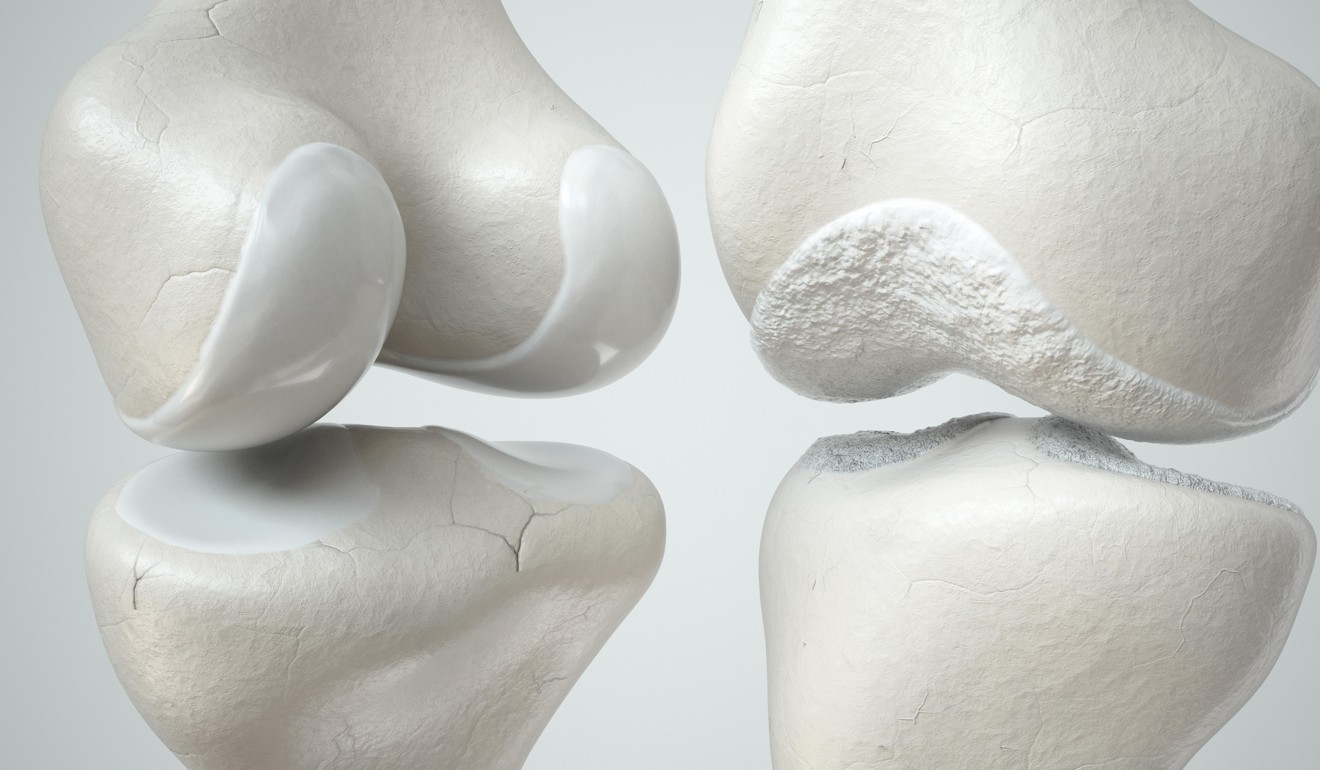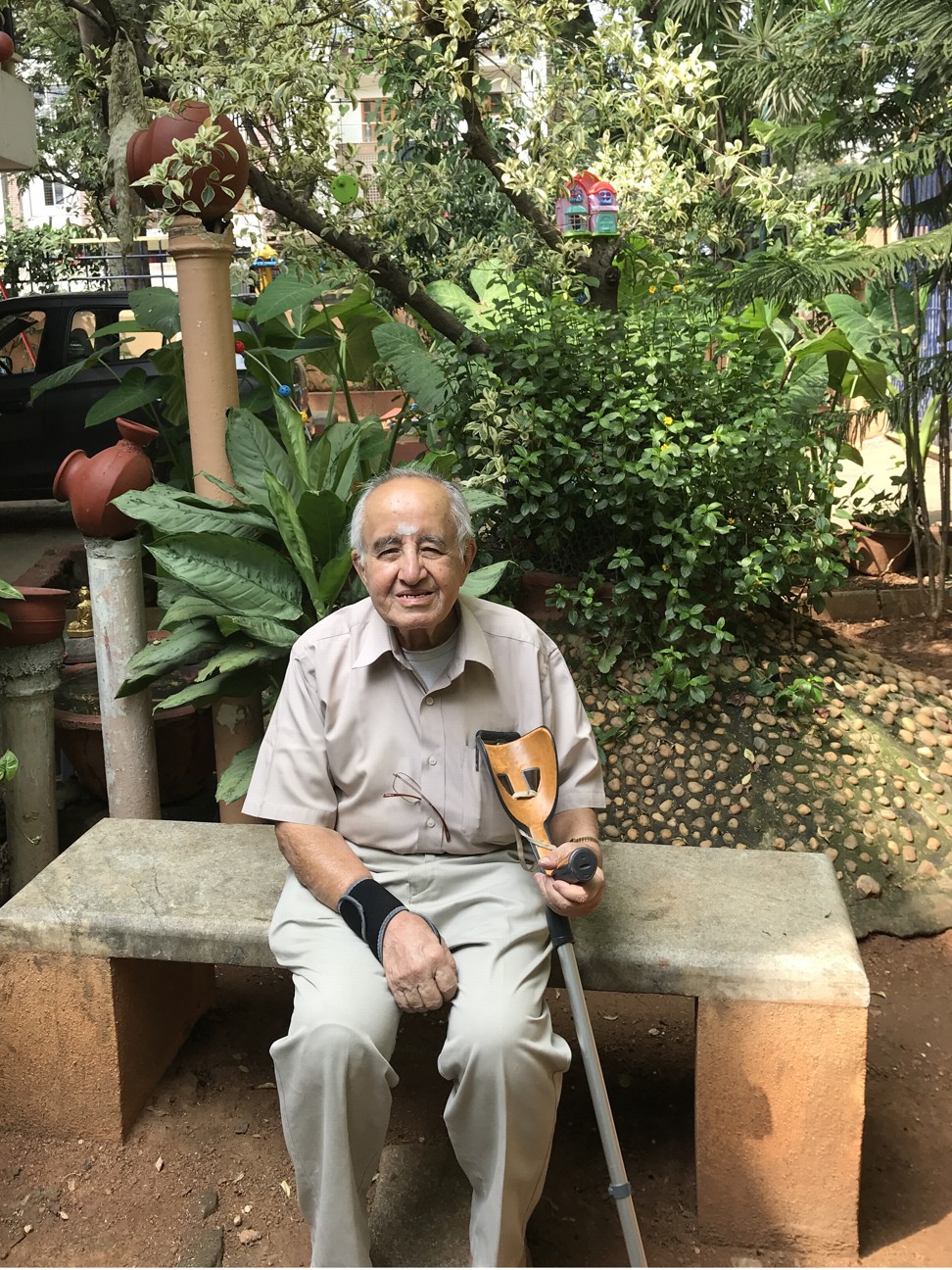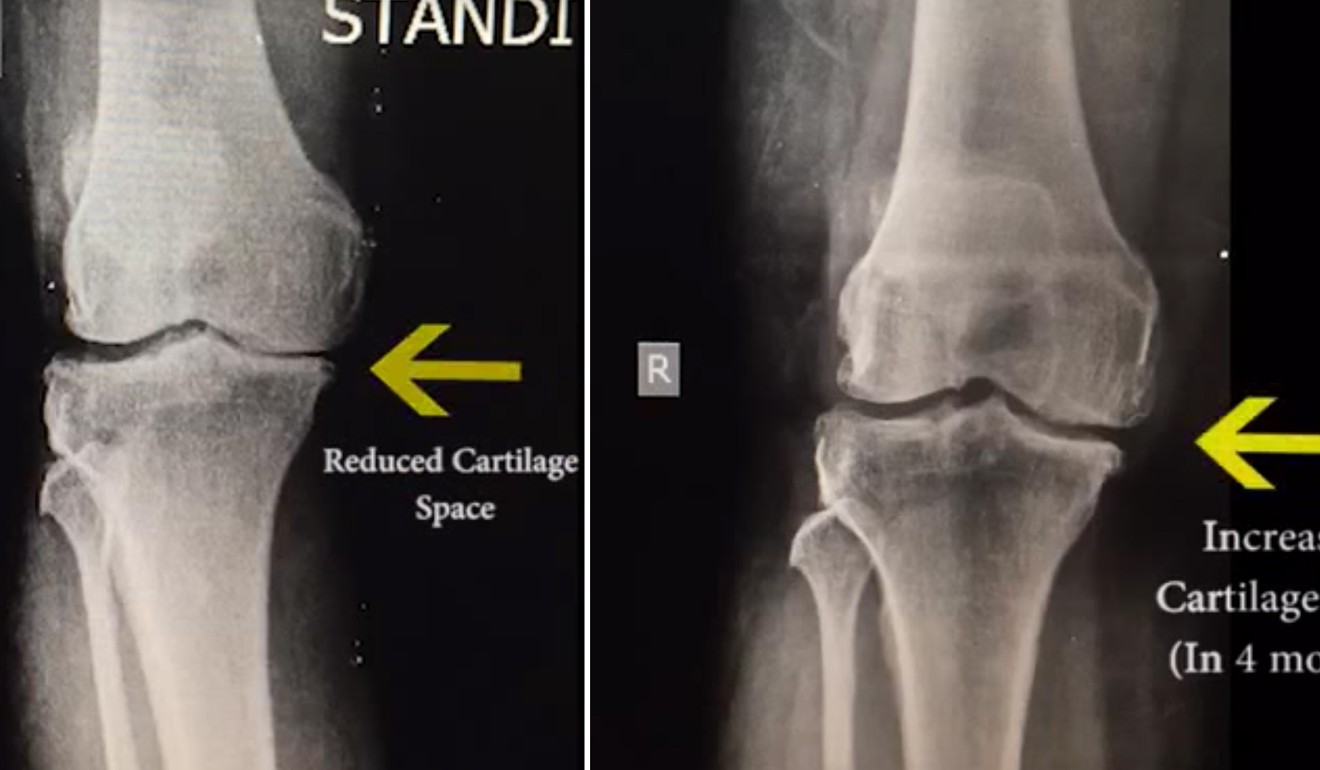
Knee surgery transformed by stem-cell treatment: it could halve need for knee replacements, doctor says
- Doctors take stem cells from patient and inject them in their knee to grow new cartilage, avoiding the need for knee replacement surgery
- Arthritis sufferers as old as 89 have benefited from the treatment, used so far only in UK, India and Korea, which is cheaper and quicker than a knee implant
Dharmendra Kumar’s mother, 58-year-old Lalitha Mehta from Chennai, suffered from arthritis, but was too old for traditional knee-replacement surgery. He went online, where he found out about two doctors – Dr V. Thirumal Selvan and Dr S. H. Jaheer Hussain – who were also in Chennai.
After training in the UK, they had introduced a groundbreaking technique using stem cells to treat patients with arthritis to the Trauma and Orthopaedic Speciality Hospital (Tosh) in Chennai. Since it involved using stem cells to help grow cartilage in his mother’s knee, Kumar reckoned the treatment would last her the rest of her life.
Five easy exercises to avoid knee pain – a video guide
“I agreed to try it even though it was totally new,” says Mehta, now 60. “I’d been in pain for eight years. I couldn’t stand in the kitchen to cook for more than five minutes. If I tried to walk, I was unstable. I fell twice. I survived for years on painkillers.”
Selvan and his team performed a procedure known as autologous collagen-induced chondrogenesis (ACIC). A year ago, they took stem cells from Mehta’s pelvic region and mixed them with a specially developed collagen gel to make a paste. They drilled a hole in her knee and injected the paste. It holds the stem cells against the bone to grow new cartilage. The procedure took 90 minutes and Mehta spent just one night in hospital.

“For three months I had to use a walker to avoid putting weight on that knee. Then I used a walking stick for another month. Now I am 90 per cent cured. I can cook and work in the kitchen and stand for more than half an hour with no pain. I plan to get my other knee done, too, so that I can go back to driving,” says Mehta.
Selvan and Hussain have performed 400 ACIC procedures in the past four years. They say the advantages are manifold. It costs 180,000 rupees (US$2,550) for one knee instead of 350,000 rupees to 800,000 rupees for a knee replacement. Patients spend one or two nights in hospital instead of six or seven days; there is no need for prolonged physiotherapy sessions; it avoids the need for an artificial implant; and the cartilage that grows will last the patient’s lifetime.
The success rate, says Selvan, is close to 99 per cent. The pain from arthritis is relieved immediately after surgery, but the biological healing is a long process and can take up to two years. The younger the patient, the quicker the cartilage regrows.
So being old means putting your feet up? Think again, and live longer
“This treatment can’t be used on every knee problem – it doesn’t work for rheumatoid arthritis – but I expect, in the next 10 years, it will [do away with 50 per cent of knee replacements] globally. It works well on moderate and advanced cartilage loss, and as part of reconstructive surgery for road accident victims. I have seen positive results on some really bad cases,” says Selvan.
He recalls that his first patient was a doctor and the next 20 were doctors’ relatives. “They immediately understood the procedure and knew that it made better sense than traditional surgery. You see, a knee replacement is a big operation for a small problem. There is a mismatch. It costs a lot. Recovery takes about three months. And, as with any surgery, five per cent of patients will suffer some complication and five per cent of the 120,000 Indians who have this surgery every year is a lot of people,” he says.
The two doctors learned the technique at Kings College Hospital in London under leading knee and limb reconstruction surgeon Dr Anantha Ram Shetty from India. Shetty, along with Professor Seok Jung Kim of South Korea, pioneered the knee cartilage regeneration procedure.
The new procedure is the fruit of Shetty’s passion – he began research into stem cells three decades ago and gradually began applying his findings to bone and cartilage repair. In 2017, the procedure was awarded the prestigious Hunterian Professorship by the UK’s Royal College of Surgeons.
Household chores a good workout for old people, but don’t overdo it
In 2011, Selvan and Hussain returned to India and set up the Trauma and Orthopaedic Speciality Hospital along with two other doctors. It is the only hospital in India to offer the treatment. It is also offered in South Korea and the UK, where it is available on the National Health Service, but only at Kings College Hospital.
Word about the procedure is spreading. Indians of all ages from all over the country, as well as foreigners are coming to the Chennai hospital. Around 60 per cent of the patients who have undergone the procedure were more than 60 years old. One of these was Chakravarti Saranga Pani, an 89-year-old former banker from Bangalore.
Pani is mentally sharp and physically in good shape. Until a few years ago, he used to swim regularly and has always led a physically active life. After his wife died, he struggled with loneliness – both his children settled abroad – so he opened a home for mentally challenged children to keep himself active. But the pain in his right knee worsened until he could not walk properly.

Like 180 million other Indians with arthritis, Pani’s cartilage had worn away. It was his daughter in California who alerted him to the new procedure.
“I was sceptical at first. I felt it was experimental and not tried and tested. But after travelling to Chennai to meet Dr Hussain, I decided to risk it. It was much cheaper and quicker,” says Pani.
He had the procedure last July on his right knee, which had no cartilage left. He spent two nights in hospital. After two months using a walker and two months with a stick, he is back to swimming 10 laps in his local pool. “I’m glad I took a chance. I feel better having had a more natural procedure than getting a metal implant put inside my knee,” he says.

What about the application of this technique to other parts of the body? “In principle, the same treatment can be used for the hip, elbow, ankle and shoulder,” says Selvan. “But these are joints that I don’t work on. Their architecture is different. But there is no reason why it can’t be used on these joints.”
The two doctors perform two to three procedures every day, including all types of orthopaedic surgery. “Our vision is to develop a world-class orthopaedic [hospital] chain,” says Selvan.
What Selvan is not so sure about, yet, is whether patients can engage in sports after the procedure. Last week, he operated on a 56-year-old former world squash champion from Kuwait.

“He is keen to get back to moderately competitive squash as early as possible. We are planning to review him after three months. It will be interesting to see how he progresses,” he says.

